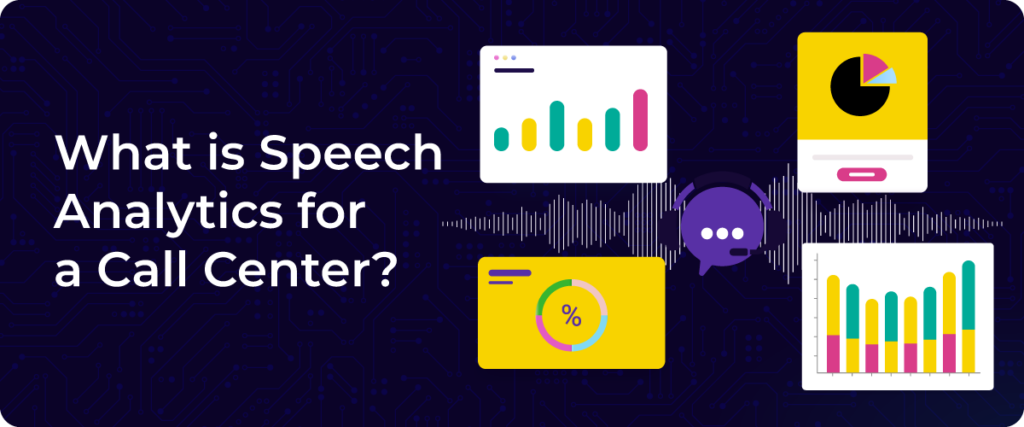Providing a great customer service experience begins with effective listening. Voice of Customer (VoC) programs capture customer voice and feedback needed to listen—through calls, chats, surveys, etc. Organizations that consistently analyze VoC feedback will uncover important insights and a deeper understanding of customer expectations, pain points, and needs. In today’s competitive market, leveraging VoC in the customer service function is one of the most effective ways to enhance satisfaction and loyalty—and gain long-term benefits.
What is the Voice of Customer?
Voice of Customer (VoC) refers to the process of capturing customer feedback, expectations, and preferences to improve products, services, and overall experience. It helps businesses understand what customers truly want, reducing guesswork in decision-making.
Companies can turn feedback into strategic actions by using voice of customer analysis tools and methodologies, such as surveys, reviews, and AI-driven insights. Essentially, VoC research ensures businesses listen before customers leave.
Why Voice of Customer Matters?
The Voice of customer matters because it bridges the gap between what businesses offer and what customers want. Companies using voice of the customer software improve retention, boost satisfaction, and drive innovation.
Benefits at a Glance –
- Increased customer retention
- Enhanced product development
- Better alignment of offerings with customer expectations
- Boosting brand loyalty
Insights from our latest blog on VoC solutions shows that the brand leveraging remarkable feedback strategies and AI driven platforms are better clustered to understand customer needs and take proactive steps before anything occurs.
Key Features to Look for in Voice of Customer Tools
When choosing a voice of the customer tools, look for these five key features:
| Features | Descriptions |
| Multi-Channel Feedback Collection | Gather insights from surveys, social media, emails, and reviews to provide a complete picture of customer sentiment. |
| AI-Powered Analytics | Advanced contact center analytics use AI to detect trends, sentiments, and pain points, helping businesses act on data quickly. |
| Integration Capabilities | The tool should seamlessly connect with CRMs, help desks, and other business systems for smooth data flow and efficient customer insights. |
| Real-Time Reporting & Dashboards | Interactive dashboards make it easier to analyze feedback, track trends, and measure customer satisfaction metrics on the go. |
| Actionable Insights & Automation | The best voice of customer platform leads to real change by offering automated workflows, alerts, and recommendations to improve customer experience. |
The right VoC tool does not just collect data–it transforms feedback into a roadmap for better business decisions.
Top 11 Voice of Customer Tools for 2025
1. ConvoZen.AI
ConvoZen.AI is more than just a voice of customer tool, it’s an AI-driven VoC software powerhouse. It doesn’t just collect feedback; it analyzes calls, transcripts, and surveys in real-time, offering deep insights into customer sentiment, compliance, and performance optimization.
Key Features:
| Features | Benefits |
| AI-Powered Conversational Analytics | Extracts insights from customer interactions automatically. |
| Compliance & Auditing | Ensures regulatory adherence for call centers and sales teams. |
| Automated Performance Coaching | Uses VoC insights to train agents and improve customer experience. |
| Real-Time Insights & Dashboards | Helps businesses act on feedback instantly. |
| Seamless CRM Integration | Works effortlessly with existing workflows. |
Unlike other tools, ConvoZen.AI turns feedback into real-time action, making it the #1 choice for businesses serious about VoC optimization.
ConvoZen.AI the only VoC tool you need
2. Qualtrics XM
Qualtrics XM is a leading tool for customer experience management, surveys, and predictive analytics. It offers AI-driven sentiment analysis, automated response tracking, and flexible survey designs, ideal for enterprise VoC programs.
3. Medallia
Medallia excels in real-time feedback and AI analysis, serving as an effective Six Sigma tool for voice of customer. It collects VoC data from emails, chats, social media, and call transcripts, enhancing customer loyalty and satisfaction.
4. SurveyMonkey
SurveyMonkey is a user-friendly VoC tool for collecting customer feedback through customizable surveys. It features templates, sentiment analysis, and automation, making it ideal for companies seeking easy voice of customer solutions templates.
5. HubSpot Service Hub
An all-in-one VoC platform lead that integrates VoC insights directly into a CRM. Businesses can use HubSpot Service Hub to track customer interactions, collect feedback, and automate support processes, ensuring a seamless customer experience.
6. NICE Satmetrix
NICE Satmetrix is a customer experience management tool that focuses on NPS (Net Promoter Score) tracking. It helps businesses understand customer loyalty trends and uses AI-powered analytics to predict customer behavior based on VoC insights.
7. Clarabridge
Clarabridge is known for its AI-powered speech and text analytics, which help companies analyze VoC data from surveys, reviews, customer chats, and call transcripts. It’s a great Six Sigma tool that qualifies VoC by identifying key trends and pain points in customer feedback.
8. GetFeedback by Momentive
GetFeedback is a real-time VoC solution designed for businesses that need fast and actionable insights. It integrates with Salesforce and other CRM tools, making it easy to automate feedback collection and follow-ups.
9. InMoment
InMoment provides advanced VoC analytics, social listening, and real-time customer sentiment tracking. It’s ideal for businesses that want AI-driven insights into customer feedback across multiple channels, helping them improve customer experience strategies.
10. Zendesk Explore
A VoC tool built for customer support teams, Zendesk Explore helps businesses analyze customer service data, ticket resolution trends, and satisfaction surveys. It integrates VoC insights into customer service workflows, helping brands enhance customer support operations.
11. Trustpilot
Trustpilot is a review-based VoC tool that allows businesses to collect, analyze, and respond to customer feedback. It’s widely used to improve online reputation, build trust, and monitor brand sentiment through public reviews.
VoC Solutions is a go-to strategy for businesses to gather actionable insights, improve customer experiences, and drive growth.
How to Implement a Voice of Customer Program
1. Define Objectives
Set measurable VoC goals like improving retention or reducing churn.
2. Choose the Right Tools
Prefer AI driven voice of customer software like ConvoZen.AI.
3. Collect Customer Feedback
Use multiple sources such as calls, chat transcripts, social media, online reviews, and NPS surveys to gather a holistic view of customer sentiment.
4. Analyze & Interpret Data
Leverage voice of customer analysis tools or a Six Sigma tool that qualifies voice of customer to identify key patterns, trends, and pain points in customer feedback.
5. Take Action on Insights
Implement process improvements, train teams, and optimize services based on data-driven VoC Smart Insights.
6. Monitor & Optimize Continuously
Use dashboards to track VoC success over time.
Voice of Customer Best Practices
1. Use Multi-Channel Feedback Collection
Relying on a single feedback source limits insights. Use calls, surveys, reviews, social media, and live chats to capture a holistic view of customer sentiment. A VoC platform like ConvoZen.AI integrates multiple channels into one dashboard for seamless analysis.
2. Leverage AI for Deeper Analysis
Traditional feedback methods often miss critical insights. AI-powered voice of customer analysis tools detect hidden patterns, trends, and emotions within customer interactions. A Six Sigma tool that qualifies VoC like ConvoZen.AI ensures precise, data-backed decision-making.
3. Take Action & Close the Loop
Gathering feedback is pointless if no action is taken. Analyze key VoC insights, implement changes, and communicate improvements to customers. Businesses that proactively act on VoC data see a 10–15% increase in customer retention.
Implement best practices for your business with ConvoZen.AI
Why Choose Convozen for Voice of Customer (VoC) ?
As the product is designed for businesses seeking modern, scalable Voice of Customer software that not only analyzes data but also turns it into action, Convozen AI’s Voice AI Agent plays a key role. It listens to every customer interaction, captures key sentiments, identifies intent, and provides real-time insights—helping support teams respond faster, personalize conversations, and drive measurable improvements in customer satisfaction.
With Convozen AI you will get –
- Real time Voice of customer analytics
- AI powered conversation intelligence
- Automated coaching or guidance for sales and support teams
- Omnichannel Feedback collection
- Seamless CRM and business tool integration
Whether you are starting a VoC program or upgrading from outdated methods, Convozen AI simplifies the process, empowers the team, and puts customer feedback at the first priority.
Experience the future of VoC and try Convozen AI today !
Frequently Asked Questions (FAQs)
1. What is Voice of the Customer (VoC) and why is it important for my business?
VoC captures and analyzes customer feedback to improve products and services. It helps identify pain points, reduce churn, drive innovation, and create personalized experiences that boost satisfaction and revenue.
2. How do I choose the right Voice of Customer tool for my specific business needs?
Consider your business size, existing technology, budget, and data needs. Look for integration capabilities, appropriate analytics, and industry-specific features. Test your top choices with free trials before committing.
3. What’s the difference between traditional surveys and modern Voice of Customer platforms?
Modern VoC platforms offer real-time feedback, multi-source data collection, AI-powered analytics, and system integration. They provide holistic customer insights versus the limited, point-in-time data from traditional surveys.
4. What are some voice of customer examples business use today?
Some examples include post purchase surveys like call reviews, online product reviews, social media feedback, and NPS scores.
5. What role does voice of customer analysis play in business growth?
Voice of customer analysis helps identify emerging trends and customer preferences. These insights add up the data driven decisions to enhance overall business performance.


